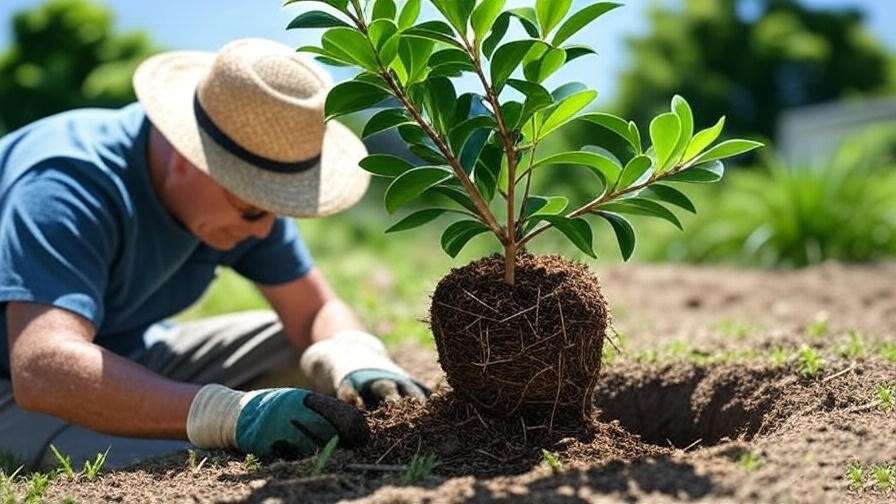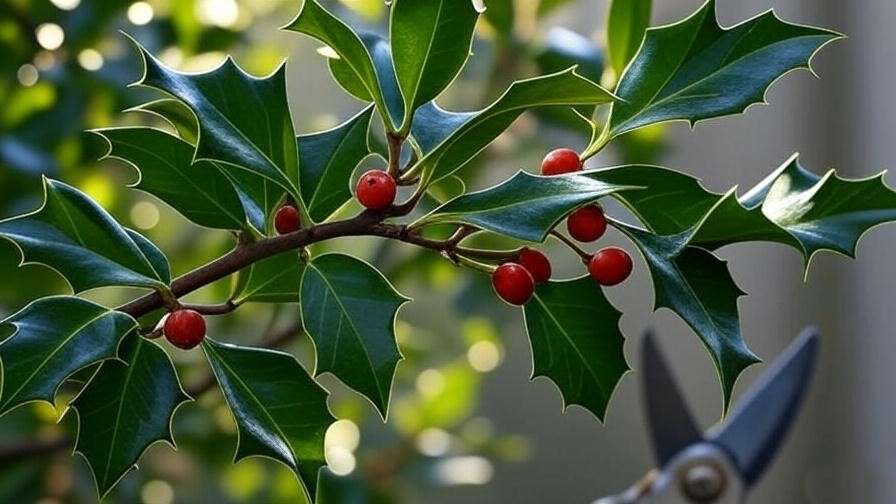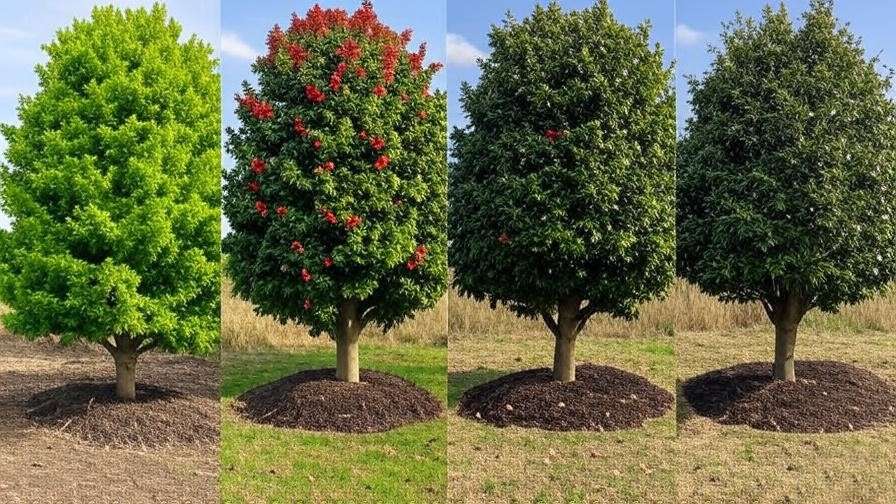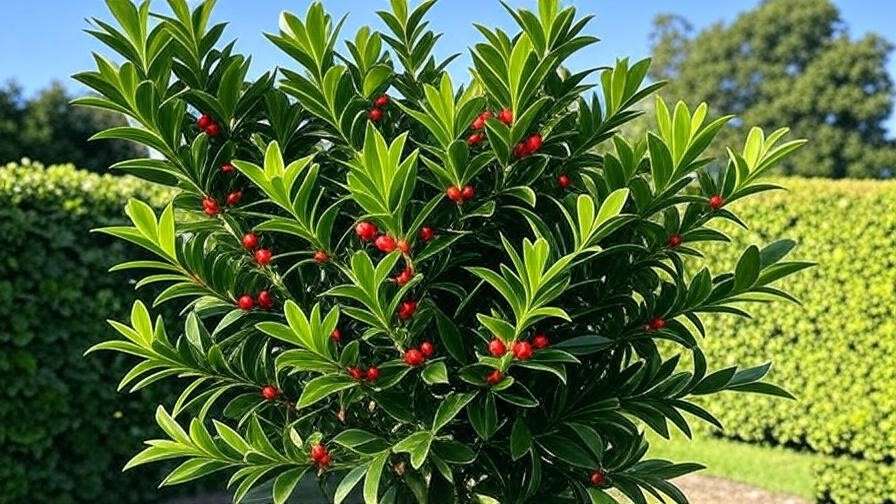Imagine transforming your yard into a vibrant, evergreen oasis with the stunning Eagleston Holly Tree—a showstopper with glossy leaves and bright red berries that captivate year-round! 🌿 Whether you’re a homeowner dreaming of a lush privacy hedge or a gardener seeking a low-maintenance focal point, this guide is your roadmap to success. As a horticulturist with over a decade of experience in tree care and landscape design, I’ve cultivated countless hollies and helped clients overcome common challenges. This comprehensive article dives deep into planting, caring, and troubleshooting for the Eagleston Holly Tree, ensuring your landscape thrives. Let’s unlock the secrets to a healthy, vibrant holly that elevates your outdoor space! 🚀
1. Understanding the Eagleston Holly Tree 🌱
1.1 What Is an Eagleston Holly Tree?
The Eagleston Holly Tree (Ilex x attenuata ‘Eagleston’) is a hybrid evergreen renowned for its ornamental beauty and versatility. This holly boasts glossy, dark green leaves, vibrant red berries (on female plants), and a moderate growth rate, reaching 15–25 feet tall and 10–15 feet wide at maturity. Its dense foliage and attractive berries make it a favorite for landscapers and homeowners alike. Unlike some hollies, the Eagleston’s leaves are softer, with fewer spines, making it easier to handle during maintenance.
1.2 Why Choose an Eagleston Holly Tree?
The Eagleston Holly is a standout choice for several reasons:
- Aesthetic Appeal: Its evergreen foliage ensures year-round greenery, while seasonal berries add pops of color in fall and winter. 🍒
- Versatility: Perfect for privacy screens, standalone specimens, or even container planting for patios.
- Wildlife Benefits: The berries attract birds, and the flowers support pollinators like bees, enhancing your garden’s ecosystem.
This tree’s adaptability and low-maintenance nature make it ideal for both novice gardeners and seasoned landscapers.
1.3 Ideal Growing Zones and Climate
The Eagleston Holly thrives in USDA Hardiness Zones 6–9, making it suitable for much of the United States, from the Southeast to parts of the Midwest. It prefers full sun (6+ hours daily) but tolerates partial shade, though berry production and foliage density may decrease in shadier spots. This holly adapts to various soil types, from sandy to clay, as long as drainage is adequate. For gardeners in marginal zones (e.g., Zone 5), extra winter protection is key, which we’ll cover later.
Expert Insight: Use a local USDA zone map or consult your extension service to confirm your zone. If you’re on the cusp, consider microclimates in your yard, such as south-facing areas, for better warmth.
2. Planting Your Eagleston Holly Tree 🌍
2.1 Choosing the Right Location
Selecting the perfect spot is critical for your Eagleston Holly’s success. Aim for a location with:
- Sunlight: At least 6 hours of direct sun daily for optimal growth and berry production.
- Space: Allow room for its mature size (15–25 feet tall, 10–15 feet wide) to avoid crowding.
- Airflow: Ensure good air circulation to prevent fungal issues, avoiding cramped corners near structures.
Common Mistake: Planting too close to buildings or fences can stunt growth and limit access for maintenance. Measure at least 8–10 feet from structures.
2.2 Soil Preparation and Requirements
Eagleston Hollies prefer well-draining, slightly acidic soil (pH 5.0–6.5). Before planting:
- Test Your Soil: Use a home soil test kit or send a sample to a local extension service to check pH and nutrient levels.
- Amend as Needed: If soil is too alkaline, add sulfur or organic matter like peat moss. For poor drainage, incorporate sand or compost.
- Boost Fertility: Mix in aged compost or well-rotted manure to enrich the soil.
Tip: A 2–3 inch layer of organic matter worked into the top 12 inches of soil creates an ideal rooting environment.
2.3 Step-by-Step Planting Guide
Follow these steps for a successful planting:
- Timing: Plant in spring or early fall to allow roots to establish before extreme weather.
- Dig the Hole: Make it twice as wide and as deep as the root ball (e.g., 24 inches wide for a 12-inch root ball).
- Prepare the Root Ball: Gently loosen roots if pot-bound, and remove any damaged ones.
- Place the Tree: Set the tree so the top of the root ball is level with or slightly above ground. Backfill with amended soil, tamping lightly.
- Water Thoroughly: Soak the area with 1–2 gallons of water to settle the soil.
- Mulch: Apply a 2–3 inch layer of organic mulch (e.g., pine bark) around the base, keeping it 2 inches from the trunk.
Watering Tip: Water deeply every 2–3 days for the first 2–3 weeks, then reduce to weekly as roots establish.

3. Caring for Your Eagleston Holly Tree 🛠️
3.1 Watering Needs
Proper watering is crucial, especially in the first year:
- First Year: Water deeply (1–2 inches) weekly, ensuring the root zone stays moist but not waterlogged.
- Established Trees: Reduce to biweekly watering, adjusting for rainfall. In drought, water every 7–10 days.
- Signs of Trouble: Yellowing leaves may indicate overwatering; wilting or crispy leaves suggest underwatering.
Expert Tip: Use a soaker hose or drip irrigation to deliver water directly to the root zone, minimizing waste.
3.2 Fertilizing for Healthy Growth
Fertilizing supports vigorous growth and berry production:
- When: Apply fertilizer in early spring and mid-summer.
- What to Use: Choose a balanced, slow-release fertilizer (e.g., 10-10-10 or 12-4-8) formulated for evergreens.
- How to Apply: Spread evenly around the drip line (the outer edge of the canopy), avoiding direct contact with the trunk.
Caution: Over-fertilizing can burn roots. Follow package instructions and water thoroughly after application.
3.3 Pruning and Shaping
Pruning keeps your Eagleston Holly looking tidy and healthy:
- When: Prune in late winter or early spring before new growth starts.
- Techniques:
- For hedges: Trim lightly to maintain shape, removing no more than one-third of new growth.
- For trees: Remove dead, damaged, or crossing branches to improve airflow.
- Tools: Use clean, sharp pruning shears to prevent disease spread.
Safety Tip: Sterilize tools with rubbing alcohol between cuts to avoid transmitting pathogens.

3.4 Mulching and Weed Control
Mulching is a game-changer for Eagleston Hollies:
- Benefits: Retains moisture, regulates soil temperature, and suppresses weeds.
- Best Mulches: Pine bark, wood chips, or shredded hardwood (2–3 inches thick).
- Weed Control: Hand-pull weeds near the base or use a pre-emergent herbicide sparingly to prevent competition.
Tip: Refresh mulch annually, keeping it away from the trunk to avoid rot.
4. Common Problems and Solutions 🐞
4.1 Pests and Diseases
Eagleston Hollies are relatively resilient but can face issues:
- Pests:
- Spider Mites: Look for stippled leaves or fine webbing. Treat with insecticidal soap or neem oil.
- Scale: Small, waxy bumps on stems. Use horticultural oil for control.
- Leaf Miners: Wavy trails in leaves. Remove affected leaves and apply organic insecticides if severe.
- Diseases:
- Leaf Spot: Black or brown spots on leaves. Improve airflow and apply fungicide if needed.
- Root Rot: Caused by overwatering or poor drainage. Ensure proper soil conditions and avoid waterlogging.
Organic Option: Neem oil is a safe, effective treatment for most pests and fungal issues.

4.2 Environmental Stressors
Extreme weather can stress your holly:
- Drought: Increase watering during dry spells, focusing on deep root hydration.
- Heat: Provide afternoon shade in scorching climates (Zone 9).
- Cold: In Zone 6 or colder, wrap the trunk with burlap and mulch heavily to protect roots.
Case Study: A homeowner in Georgia revived a drought-stressed Eagleston Holly by installing drip irrigation and applying a 3-inch mulch layer, restoring vibrant growth within one season.
4.3 Berry Production Issues
No berries? Here’s why:
- Pollination: Eagleston Hollies are dioecious, meaning male and female plants are needed for berry production. Ensure a male holly (e.g., ‘East Palatka’) is within 50 feet.
- Stress: Poor soil, insufficient water, or lack of sunlight can reduce berry yield.
- Solution: Plant a male and female tree, maintain consistent care, and ensure adequate sunlight.
Expert Insight: One male holly can pollinate up to five female trees, so plan your layout strategically.
5. Seasonal Care Tips for Year-Round Success 📅
5.1 Spring Care
Spring is a critical time to set your Eagleston Holly up for a healthy growing season:
- Fertilizing: Apply a slow-release, balanced fertilizer (e.g., 10-10-10) in early spring to boost new growth. Spread it evenly around the drip line and water thoroughly.
- Pruning: Trim lightly to shape the tree or remove winter-damaged branches. Focus on maintaining airflow to prevent fungal issues.
- Pest Check: Inspect leaves and stems for early signs of spider mites or scale, which can emerge as temperatures warm. Use neem oil for organic control if needed.
Tip: Check for new growth by looking for bright green shoots. This signals your holly is ready for the season.

5.2 Summer Maintenance
Summer brings heat and potential drought, so adjust care accordingly:
- Watering: Increase watering to every 7–10 days during dry spells, ensuring 1–2 inches of water reaches the root zone. Use a soaker hose for efficiency.
- Pest Monitoring: Watch for spider mites and leaf miners, which thrive in hot, dry conditions. Spray affected areas with insecticidal soap.
- Sunlight: Ensure the tree gets at least 6 hours of sun daily. If planted in partial shade, consider trimming nearby plants to improve light exposure.
Expert Insight: Mulching in early summer helps retain soil moisture and keeps roots cool, reducing stress during heatwaves.
5.3 Fall Preparation
Fall is the time to prep your Eagleston Holly for cooler weather:
- Watering Adjustments: Reduce watering as temperatures drop, but ensure the soil stays slightly moist, especially for newly planted trees.
- Mulching: Add a fresh 2–3 inch layer of mulch to insulate roots and retain moisture through winter.
- Planting Opportunity: Fall is an excellent time for planting, as cooler temperatures allow roots to establish without heat stress.
Tip: Remove fallen leaves around the base to prevent fungal spores from overwintering.
5.4 Winter Protection
In colder climates (Zone 6 or marginal areas), protect your holly from winter damage:
- Root Protection: Apply a 3–4 inch layer of mulch around the base to insulate roots. Use pine bark or wood chips for best results.
- Wind and Sun Protection: Wrap the trunk with burlap in windy or exposed areas to prevent winter burn, where leaves dry out due to cold winds and sun.
- Watering: Water sparingly (once a month) if winter is dry, as evergreens still lose moisture through leaves.
Case Study: A gardener in Zone 6b saved their Eagleston Holly from frost damage by wrapping it in burlap and adding a thick mulch layer, ensuring vibrant growth by spring.
6. Enhancing Your Landscape with Eagleston Holly 🌸
6.1 Design Ideas
The Eagleston Holly’s versatility makes it a star in landscape design:
- Privacy Hedge: Plant multiple trees 5–7 feet apart for a dense, evergreen screen that blocks noise and views.
- Accent Tree: Use a single Eagleston Holly as a focal point in your front yard or garden bed, paired with colorful annuals like pansies or marigolds.
- Container Planting: Grow in large pots (at least 18 inches wide) for patios or urban spaces, ensuring good drainage and regular watering.
Example: A suburban homeowner created a stunning backyard oasis by planting a row of Eagleston Hollies as a hedge, complemented by low-growing azaleas for a pop of spring color.

6.2 Eco-Friendly Benefits
Eagleston Hollies contribute to a sustainable landscape:
- Wildlife Support: Red berries provide food for birds like cardinals and robins, while small flowers attract pollinators like bees. 🐦
- Low Maintenance: Once established, these trees require minimal care, reducing the need for chemical fertilizers or excessive watering.
- Erosion Control: Their deep root systems stabilize soil, making them ideal for slopes or erosion-prone areas.
Tip: Pair with native plants like coneflowers or black-eyed Susans to create a wildlife-friendly, low-maintenance garden.
7. FAQs About Eagleston Holly Tree Care ❓
Q1: How fast does an Eagleston Holly Tree grow?
A: Eagleston Hollies grow moderately, adding 1–2 feet per year under ideal conditions. Growth slows in poor soil or shade.
Q2: Can I grow an Eagleston Holly in a container?
A: Yes, use a large container (18–24 inches wide) with well-draining soil. Water regularly and fertilize every 6–8 weeks during the growing season.
Q3: Why are the leaves on my holly turning yellow?
A: Yellow leaves often indicate overwatering, poor drainage, or nutrient deficiency. Test soil pH and adjust watering or fertilization as needed.
Q4: Do I need two trees for berries?
A: Yes, Eagleston Hollies are dioecious. Plant a male holly (like ‘East Palatka’) within 50 feet of a female to ensure berry production.
Q5: How do I protect my holly from pests naturally?
A: Use neem oil or insecticidal soap for pests like spider mites or scale. Encourage natural predators like ladybugs by planting companion flowers.
8. Expert Tips for Long-Term Success 🏆
- Regular Monitoring: Create a seasonal care calendar to track watering, fertilizing, and pruning tasks. Consistency prevents issues before they start.
- Soil Testing: Test soil annually to monitor pH and nutrient levels. Adjust with sulfur or lime to maintain the ideal 5.0–6.5 pH range.
- Community Insight: Join local gardening groups or consult your extension service for region-specific advice. For example, gardeners in the Southeast report success with drip irrigation for Eagleston Hollies.
- Pro Tip: Install a drip irrigation system for efficient, targeted watering, especially in hot or dry climates. Set it to deliver 1–2 gallons weekly for established trees.
Conclusion
The Eagleston Holly Tree is a game-changer for any landscape, offering year-round beauty, wildlife benefits, and low-maintenance charm. 🌿 By following this guide—covering planting, care, troubleshooting, and design—you’re equipped to grow a thriving holly that elevates your outdoor space. From choosing the perfect spot to protect your tree through winter, every step is designed to ensure success. Start planting your Eagleston Holly today, and share your tips or questions in the comments below! For more tree care advice, explore our articles on evergreen care and landscape design. 🌳













